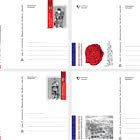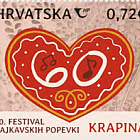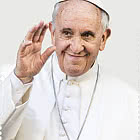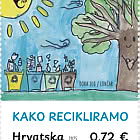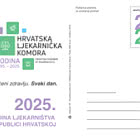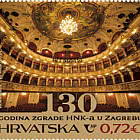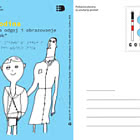We have lost the talent for expectation. Everything should happen now, here and now: and when we get everything now, here and now, the gain disappears at such a speed that we can hardly believe it ever existed. Once, happiness had to mature, as everything else in nature. An excitement needed preparation and work, it needed invocation: this was the only way to prolong its lasting. Loss of patience, actually planned and cultivated in today's civilisation, is to high extend the cause of greed for artificial worlds. One small object which we carry every winter into our home reminds us of a different rhythm and purpose of living. The object is round, often green, i.e. ever-green. It is a wreath, a circle, symbolising eternity from ancient times. Its ever-greenness means the lasting renewal of nature. Plants interwoven in the wreath have their own meanings. We know how much fame the laurel denoted in history, how much suffering the thorn, how much virginity the white flowers... And, although today a wreath - a challenge to individual creativeness - can be woven from literally anything, it keeps the magic of its original message. The message of eternal, always renewed lasting, which gains sense by the light it brings: the candles stuck into the wreath separate chillness from warmth, day from night, death from salvation. The talk is here, of course, about the Advent wreath, one of the very dear Christmas requisites in our homes. Although its elements have a long history, in Christian iconography the wreath is actually young and new. Its origin is almost a Biedermeier story, akin to Oliver Twist or The Little Match Girl. Hard social situation borders with fairly-tale or is translated into it, always by a miracle of some lit light. In Germany, in Hamburg, there lived (from 1808 to 1881) Johann Hinrich Wichern. He had seven brothers and sisters. His father, a notary, died when Johann was fifteen. Then he had to take care of the whole family and greatly experienced the hardship of life. When he finished theology, as evangelic pastor and himself a father of nine children, he became especially sensitive for the fate of orphans. He managed to get from the city one decrepit house, known later as the “Rough House” which he made home and an educational institution for children without family and with uncertain future. In the “Rough House” children were given education and thought crafts, but - much more than that, also a lifetime's provision of human warmth. Thus, Johann Hinrich Wichern got an idea to illuminate one prayer per day under light of one candle in December, awaiting Christmas: twenty small candles for normal days and four big candles for Sundays. This was in 1838. His first wreath was a wooden, horse carriage wheel. Some years later his boarding pupils started to substitute this wooden wreath with the ever-green one. Having left their home, earning their own bread, they spread the custom which slowly proved contagious. From the protestant environment the wreath soon spread out and assumed general Christian meaning. In 1925 it was set in the Catholic Church in Köln and about 1935 it became a habit everywhere to bless it in churches; in our consumer age it also conquered public city areas and became an element of global urban folklore. Some of its original features have changed or were forgotten with time. Should there be three violet candles and one pink (penance and joy), maybe also the fifth one, white, Christmas candle in the middle or should they be red as blood of Christ's sacrifice, are their names “prophet's”, „Bethlehem’s“, pastoral” or “angel's” or some other - all of them explaining symbolically conceived details - would be difficult and maybe also useless to judge. However, what remains is the remembrance of the meaning of waiting, of expectance and of a deserving preparation for everything we consider valuable and important, of a calendar of soul in which there are four seasons of the year, four steps to the breakthrough from time... into Christmas.












